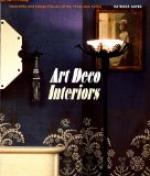Chippendale carved the posts of his bedsteads, and so the bed curtains were drawn back and only a short valance was used around the top, whereas in the time of William and Mary bed curtains enveloped all the woodwork. Still earlier in the Elizabethan period bed posts were elaborately carved.
In the eighteenth century it was the fashion to embroider the bed curtains.
The Chippendale china-cabinets with glass fronts, were the outcome of the fad for collecting Chinese and French porcelain, and excellent taste was displayed in collecting these small articles within definite and appropriate limits. Cabinets with glass doors were also used as receptacles for silverware.
Thomas Sheraton (1760-1786), another great name in the Mahogany Period, admired Louis XV and Louis XVI and one can easily trace French influence in the “light, rhythmic style” he originated. Sheraton’s contribution to interior decoration was furniture. His rooms, walls, ceilings, over-doors, windows and chimney pieces, are considered very poor; which accounts for the fact that Sheraton furniture as well as Heppelwhite was used in Adam rooms.
Sheraton made a specialty of pieces of furniture designed to serve several purposes, and therefore adapted for use in small rooms; such as dressing-tables with folding mirrors, library step-ladders convertible into tables, etc.
The backs of Sheraton chairs had straight tops and several small splats joined to a cross-rail, and not to the seat. The legs were straight.
Sheraton introduced the use of turned work on the legs and outer supports of the backs of chairs, and produced fine examples of painted furniture, especially painted satin-wood. He, also, did some very fine inlaying and used cane in the seats and backs of chairs which he painted black and gold. Among those who decorated for him was Angelica Kauffman.
Heppelwhite chairs are unmistakable on account of their shield, heart or oval backs and open splats, which were not joined to the seat in the centre of backs. The most beautiful were those with carved Prince of Wales feathers, held together by a bow-knot delicately carved. They were sometimes painted. The legs of Heppelwhite furniture were straight.
We see in the book published by A. Heppelwhite & Co., a curious statement to the effect that cabriole chairs were those having stuffed backs. This idea must have arisen from the fact that many chairs of the eighteenth century with cabriole legs, did have stuffed backs.
Robert Adam, born in 1785, was an architect and decorative artist. The Adam rooms, walls, ceilings, mantels, etc., are the most perfect of the period; beautiful classic mouldings encrust ceilings and sidewalls, forming panels into which were let paintings, while in drawing-rooms the side panels were either recessed so as to hold statuary in the antique style, or were covered with damask or tapestry. It is stated that damask and tapestry were never used on the walls of Adam dining-rooms. James Adam, a brother, worked with Robert.




